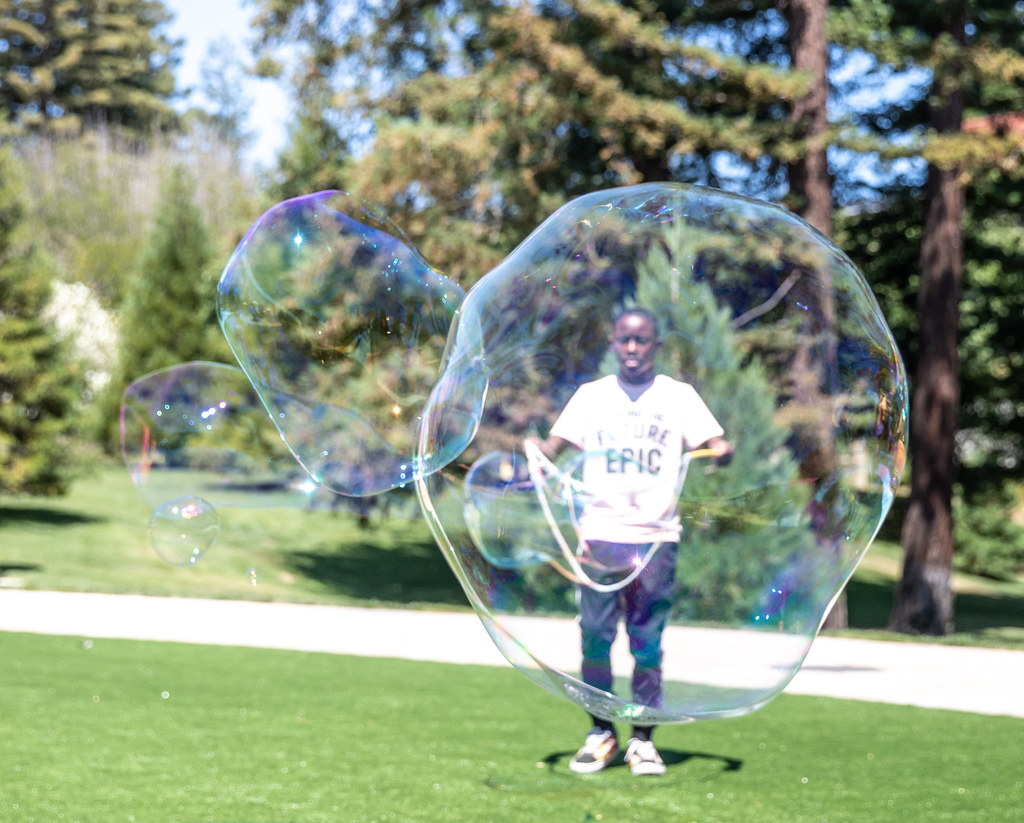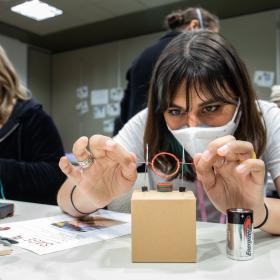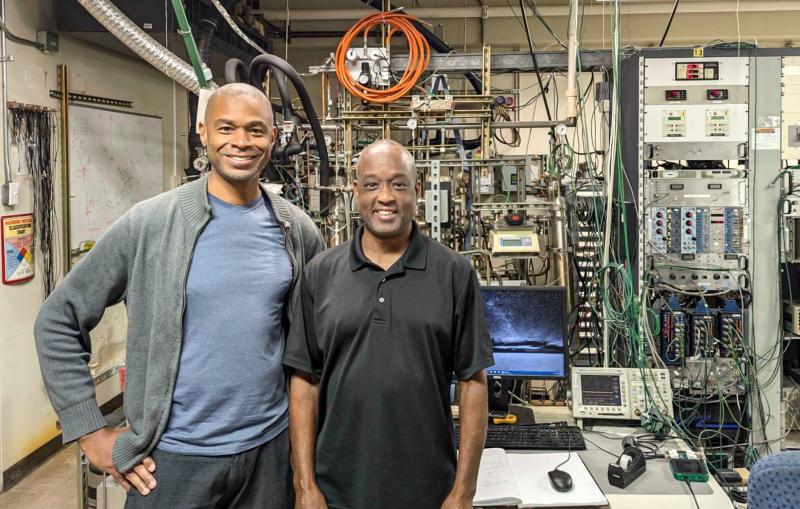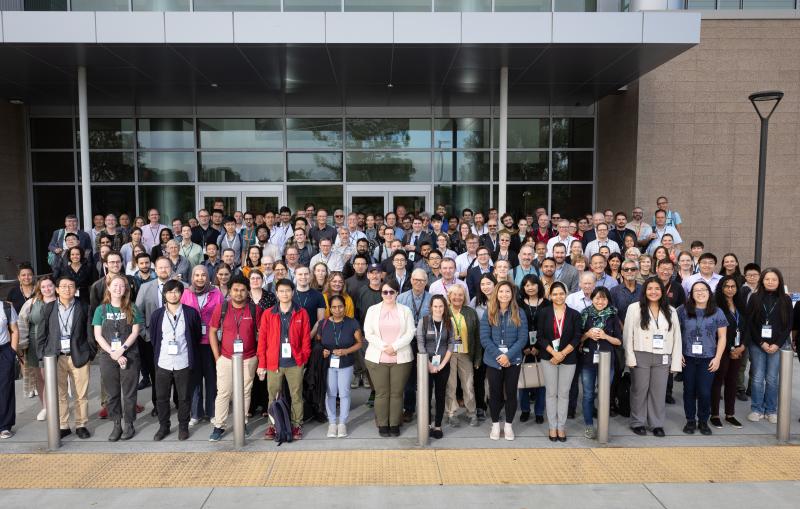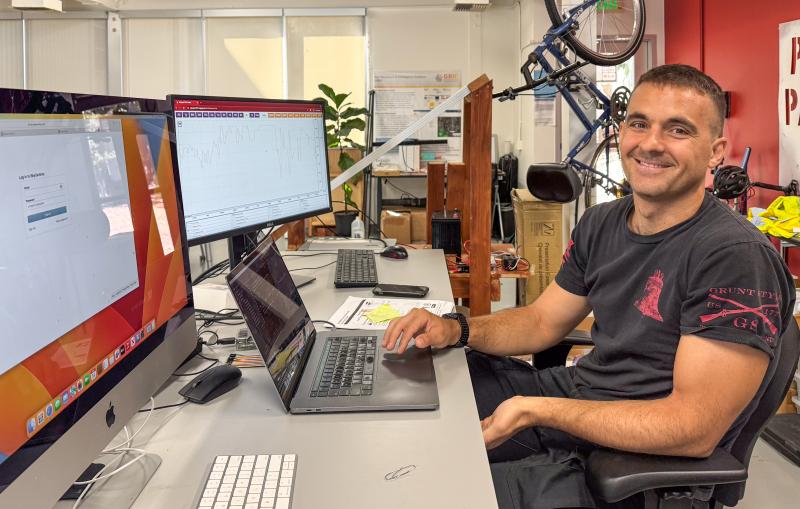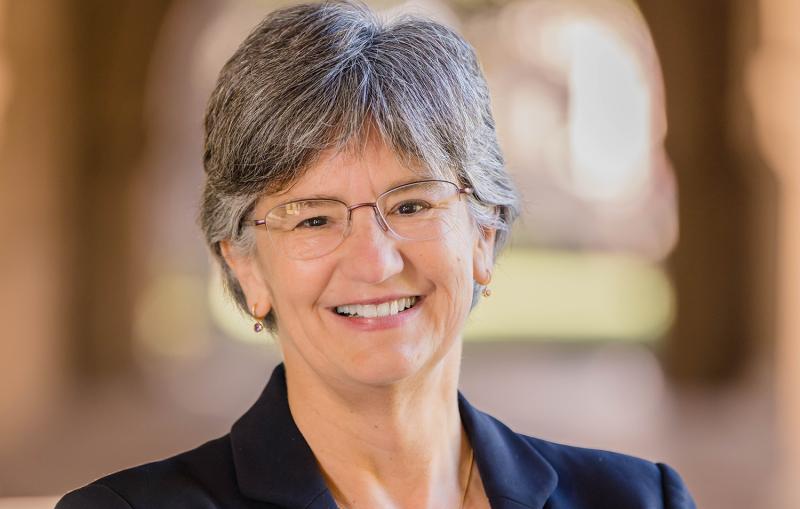SLAC summer programs encourage students to explore STEM careers
From middle schoolers to graduate students, more than 300 were introduced this year to real-world science, technology, engineering and math.
By Jennifer Huber
The Department of Energy’s SLAC National Accelerator Laboratory welcomed more than 300 science enthusiasts this summer – from middle schoolers to physics graduate students – for camps, institutes and internships aimed at encouraging them to become part of the science, technology, engineering and mathematics (STEM) community.
The youngest group – 18 students from Ile Omode, an African-centered middle school in Oakland – attended a week-long summer camp hosted by the Committee for Outreach, Recruitment & Engagement (CORE) Science Institute. The students learned about thin film interference from bubbles, coding and electronics from programming Arduino kits, electricity from a Van de Graaf generator and Newton’s laws of motion from playing basketball. They also learned the difference between science and engineering by taking apart old cell phones, and enjoyed the tasty results of a chemistry demonstration on how to make ice cream with liquid nitrogen.
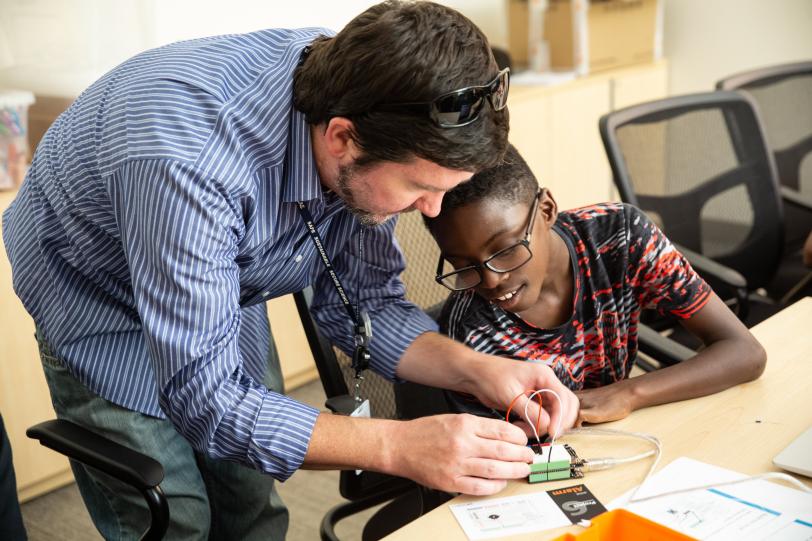
CORE Science Institute students also worked in pairs to prepare and present a poster on one of these activities to a large cross section of SLAC employees. Camp organizer Margaux Lopez said she considers this poster session and the presentation skills it hones the most valuable part of the week.
The second annual SLAC Accelerating Girls' Engagement in STEM (SAGE-S) summer program introduced high school girls to the work and lifestyles of scientists and engineers at SLAC. The 40 participants came from 30 public high schools, traveling from as far away as Santa Rosa, Sacramento and Gilroy.
Over the course of a week, the students heard talks by scientists and engineers, worked on team science projects and shadowed SLAC professionals as they went about their work. The girls also attended a professional growth program to develop critical skills like effective communication, under the guidance of organizers Diana Gamzina and Giulia Lanza. This year, the SAGE-S executive committee added a “leadership styles” exercise that emphasized the need for diverse approaches to leadership.
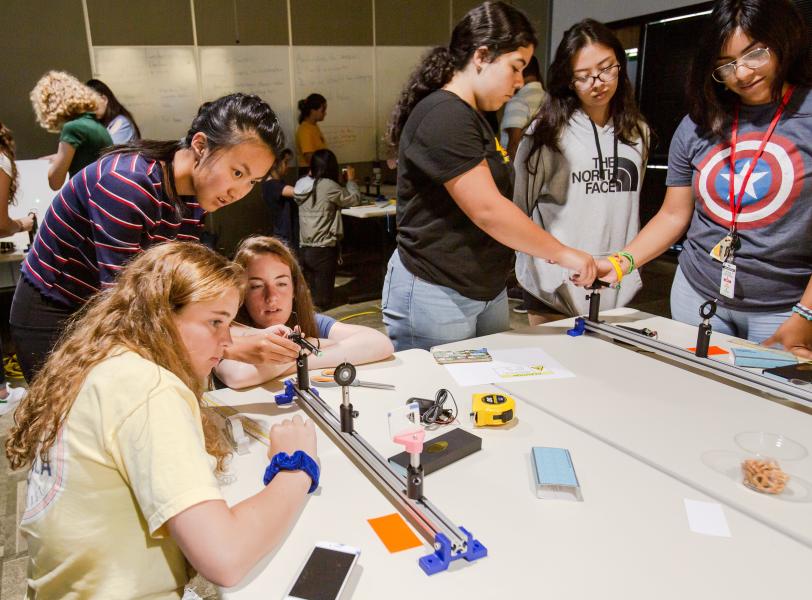
But the SAGE-S camp wasn’t all work. The students also enjoyed evening activities like building spaghetti-marshmallow towers and duct tape wallets at their Stanford dorms and stargazing at the Stanford and Foothill observatories. These relaxed activities allowed participants to make friends with other students and with the SLAC scientists and engineers who joined in.
More than 120 undergraduate students got a deeper immersion in the SLAC research community as summer interns through five internship programs. They were guided by organizers Enrique Cuellar and Alan Fry and mentored by SLAC scientists, engineers and other professionals. Interns participating in the two programs that were funded by DOE also wrote papers and gave presentations on their research at the end of the summer. This year, about a third of all the interns were women.
Many of these undergraduates participated in the Science Undergraduate Laboratory Internships (SULI) program, a DOE Office of Science-funded program that provides STEM research opportunities for students from both four-year and community colleges at 17 participating DOE laboratories and facilities. SLAC’s SULI interns also experienced life at Stanford by living in the dorms.
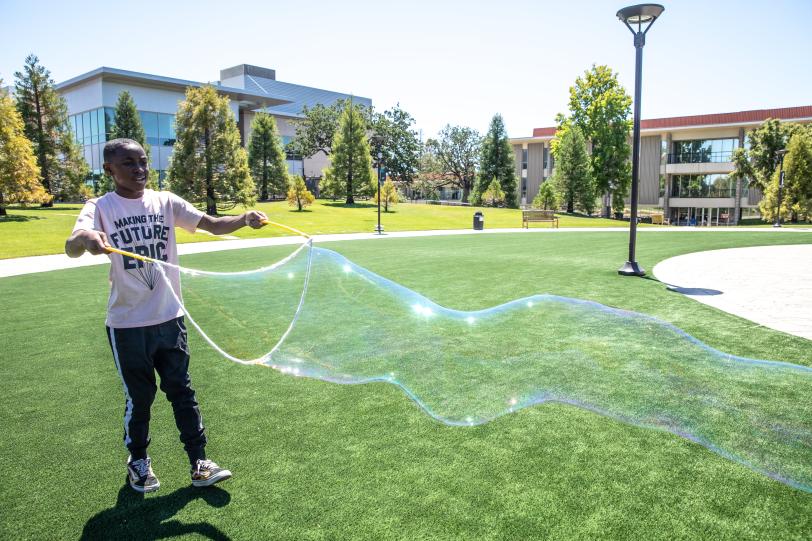
Another popular summer program, the Linac Coherent Light Source (LCLS) Internship program for undergraduates and graduate students, is funded by the LCLS Directorate at SLAC. These interns focused on hands-on laboratory, programming and data analysis projects for the LCLS and LCLS-II programs. They came from 26 colleges and universities, and many were from historically black colleges.
For community college students, the DOE Office of Science-funded Community College Internships (CCI) program provided housing on the Stanford campus and real-world technology experience at SLAC. Meanwhile, the STEM Core Community College program offered students from two local community colleges valuable experience as technicians and technologists at SLAC; the program was funded by the Alameda County Workforce Development Corporation and facilitated by Growth Sector.
But what about those who dream of becoming STEM teachers rather than researchers? SLAC had that covered, too, with the STEM Teacher and Researcher (STAR) program, which is funded by Cal Poly, San Luis Obispo for students and alumni of California state universities and participants in the National Science Foundation’s Robert Noyce Teacher Scholarship Program.
Based on past experience, you may meet some of these interns as long-term SLAC employees in the future.
Finally, as the summer nears its end, 120 physics graduate students and early-career scientists from all over the world attended the SLAC Summer Institute (SSI). This year’s theme was the flavor physics associated with quarks, charged leptons and neutrinos. SSI participants attended lectures, topical conference talks and discussion sessions, did group projects and took tours. According to organizer Thomas Rizzo, the most requested team project used machine learning algorithms to identify electron and muon neutrino events in a liquid argon time projection chamber.
Participants also competed in a “wittiest answer to the question” contest, a highly competitive and long-standing tradition of SSI. This year the question was, “A discovery in the area of the Physics of Flavor could lead to the first clear signal of Beyond the Stanford Model physics. What will it be and how will it impact future developments in HEP?” The winning answer by Innes Bigaran predicted a detection of neutrinoless double beta decay that confirms the Majorana nature of neutrino mass and causes Ettore Majorana, who disappeared under mysterious circumstances in 1938, to reappear to accept a Nobel Prize.
You can find more information about SLAC’s educational and internship programs here.
Contact
For questions or comments, contact the SLAC Office of Communications at communications@slac.stanford.edu.
About SLAC
SLAC National Accelerator Laboratory explores how the universe works at the biggest, smallest and fastest scales and invents powerful tools used by researchers around the globe. As world leaders in ultrafast science and bold explorers of the physics of the universe, we forge new ground in understanding our origins and building a healthier and more sustainable future. Our discovery and innovation help develop new materials and chemical processes and open unprecedented views of the cosmos and life’s most delicate machinery. Building on more than 60 years of visionary research, we help shape the future by advancing areas such as quantum technology, scientific computing and the development of next-generation accelerators.
SLAC is operated by Stanford University for the U.S. Department of Energy’s Office of Science. The Office of Science is the single largest supporter of basic research in the physical sciences in the United States and is working to address some of the most pressing challenges of our time.
